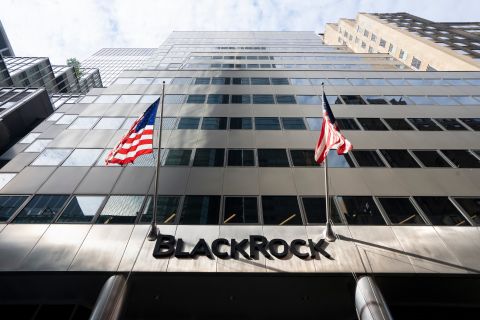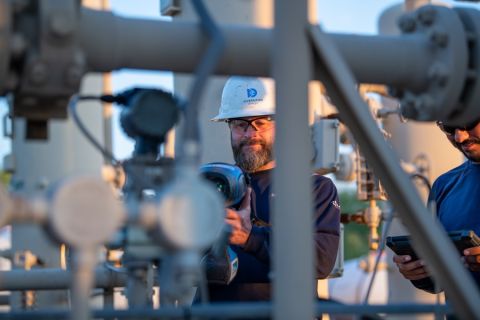
Waste Management senior vice president and chief sustainability officer Tara Hemmer at Hart Energy's 2022 Energy ESG conference. (Source: Arnaldo Larios / Hart Energy)
HOUSTON - Waste Management (WM) is at the intersection of decarbonization and circularity with a huge opportunity to convert methane gas, the company’s senior vice president and chief sustainability officer Tara J. Hemmer said during her opening keynote address at Hart Energy’s Energy ESG Conference in Houston.
WM, the largest environmental solutions provider in North America, is involved in taking materials from residential locations to recycling facilities and is focused on getting those materials back into the circular supply chain.
“[We are] increasingly at the intersection of two key trends that we are seeing in the world today: decarbonization and circularity,” Hemmer said.
In terms of ESG, Hemmer said WM’s aim was to be a people first company while also focusing on environmental justice.
“We have thousands of facilities across North America, and some are located in areas that either are economically underserved or have high ethnic populations, and at the end of the day we need to have the right community engagement models where our facilities are.”
Capturing methane

In North America, WM is the largest residential recycler, handling over 15 million tons per year. The company boasts a network of over 50 single stream recycling facilities. The company has over 255 landfills across North America that are active and another 300 that are closed.
“Most of the landfills generate landfill gas, and our landfill gas is roughly 50% methane. So we have a huge opportunity to really think through how we convert that methane, in some cases which is currently flared, to bring it to a renewable fuel… renewable natural gas. So that’s a big growth platform for us.”
Earlier this year, WM announced plans to invest $1.6 billion over a 5-year period aimed at its recycling renewable gas infrastructure. The company looks to build 17 renewable natural gas plants and grow “the number of MMBtus that we convert to renewable natural gas six times,” Hemmer said.
Additionally, the executive highlighted that over 90% of WM’s Scope 1 emissions come from its landfills and that the company was looking at containing the releases.
“We really need to be tackling fugitive emissions and make sure we’re capturing more of those within our landfill gas collection network, and of course the more we capture, the more we can put into our renewable natural gas infrastructure network,” Hemmer said.
CNG fleet
In the U.S. and Canada, WM operates over 15,000 daily routes with the largest fleet of compressed natural gas (CNG) vehicles in North America. Approximately 70% of WM’s routed fleet runs on compressed natural gas.
CNG from renewable natural gas that is produced in WMs landfills has a role in the energy transition, Hemmer said.
“If you go back to 2010, we’ve reduced our fleet emissions by over 46% over that time horizon, and it’s because we have been leveraging compressed natural gas as a transportation fuel,” Hemmer told the Hart Energy attendees.
Recommended Reading
Darbonne: ESG, ‘Oh So 2022,’ Reduced to Table Stakes?
2024-02-11 - ESG champion BlackRock is paring, while Exxon Mobil’s growing. Today, ESG is just table stakes.
Hart Energy’s Influential Women in Energy: A Woman of G.R.I.T.
2024-03-07 - When Lara Jones was at her lowest point, she developed a system to transform her fears into action. Now, her mission is to share what she learned.
Women in Energy: Here’s to Ms. Flat-Bottomed Paper Bag Inventor
2024-03-10 - A salute to the women of genius, including ‘Ms. Plain English Computer Language Inventor’ and ‘Ms. Parity is Not Conserved in Weak Interaction Discoverer.’
Darbonne: The ESG Sword: BlackRock's Life, Death by ESG
2024-04-17 - BlackRock, the $10 trillion investment manager, is getting heat for too much ESG investing, while shareholders are complaining it’s doing too little.
Keeping it Tight: Diversified Energy Clamps Down on Methane Emissions
2024-04-24 - Diversified Energy wants to educate on emission reduction successes while debunking junk science.






